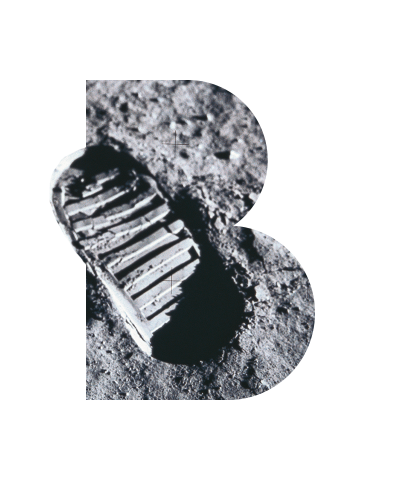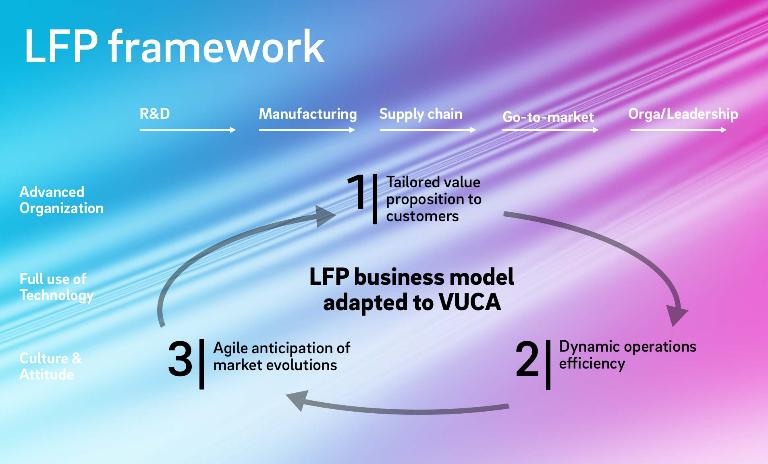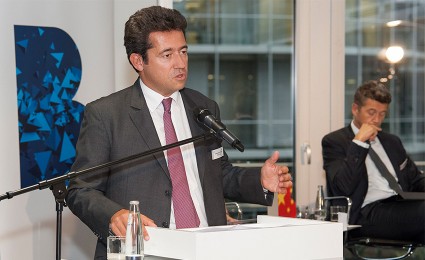We’re entering unchartered territory that is, at once, frightening and dangerous, but also beautiful and exciting.


Managing To manage a company successfully requires mastering the art of adapting quickly to the unknown a complex world in a state of constant flux.
A new business philosophy
Today, businesses and governments operate in a world where disruption can be everywhere and change has become the new normal. For quite some time now, this environment has been described as VUCA – Volatile, Uncertain, Complex and Ambiguous.
- Volatile because uncontrollable events such as financial crises, political and social upheavals, and natural disasters occur more frequently than in the past and prices gyrate more wildly. It is not uncommon these days for stock markets to move more than 2% per day. The challenge is thus to plan long term, standardize actions and stay competitive.
- Uncertain because the growing density and volatility of events complicates predictions; it is difficult to make firm long-term plans (e.g. precise budgeting). This undermines the authority of even the most respected forecasters, and makes it possible for two acknowledged "experts" to derive diametrically opposed conclusions from the same set of data.
- Complex because interactions are no longer linear. In the modern world, with its interconnected economies and supply chains and increasingly communicative societies, it has become harder to connect causes to effects. It will become even more difficult in the future, because of the mind-boggling rate at which we are generating new data. It thus becomes hard to target appropriate actions and to control impact.
- Ambiguous because the confusion of causes and effects makes it harder to divine the significance or implications of particular events or to know who your allies are and who are our enemies. It is difficult to clarify meanings, to protect your strengths, and to generate trust.
Impact instead of size
The concept of VUCA was first identified 20 years ago at the US Army War College, when future generals were told to prepare for a changing geopolitical and technological environment.
The Obama administration's use of drones, cyber weapons and special forces represented a clear break with Colin Powell's doctrine of "shock and awe".
The reason why the Obama administration prefers to tread much more lightly is that, although they can't predict the consequences of a drone strike, a cyber-attack or a special forces mission, they can be reasonably confident that, even in a VUCA world, the more lightly you tread, the fewer and less dramatic the unintended consequences. It has become adopted by the business world since.
Exponential technological progress and changing consumer habits
Technological and sociological revolutions are underway, and this new environment provokes brutal changes in consumer habits. The accessibility and adoption of new technologies are getting faster and faster, change is no longer linear but exponential. The price of technologies, both physical and digital, is collapsing due to extremely low interest rates. Digital and new technologies are transforming all industries, with a strong impact on jobs. Europe is currently lagging behind, as it didn't succeed in taking its fair share on the digital stage, squeezed between the US and Asia.
New players (Google, Apple, Facebook, Amazon, Uber, Airbnb, Baidu, Alibaba, Tencent) are changing deeply-rooted habits over very short timeframes. They are gradually disrupting all sectors. The drivers of competition are shattered, both for countries and for companies, and corporate players have shown a limited ability to launch successful disruptive business models. Finally, data and storage have become key issues for many companies.
Light Footprint: helping businesses seize change
Due to this fast changing environment, our traditional management models cannot work anymore. Strategies become obsolete before they are even finalized and competencies become outdated before they are fully developed. This management crisis can be demonstrated easily: around 75% of the world's biggest bankruptcies happened between 2009 and 2015, and traditional methods such as lean management, enterprise resource planning, shareholder value, and activity-based costing no longer seem to be effective. As a matter of fact, our current models were invented by accident in 1841 with the creation of the multi-unit business enterprise (MUBE) and have not really been overhauled since.
In this context, the re-invention of the business model can be enabled through the Light Footprint philosophy.
The Light Footprint approach goes hand in hand with the digital transformation of industry and society. The reason is that digitization is something that goes beyond machines replacing humans and required profound changes in the setup of companies and their management.
The 3 pillars of Light Footprint Management
Advanced organization, full use of technology and a new culture (OTC) are the three pillars of modern Light Footprint Management.
Different levers along the value chain
For businesses that operate in today's VUCA world, the key to success is flexibility: flexibility in the organization, which strikes the right balance between centralized and decentralized structures; flexibility in the use of technology to select the right business model and a flexibility of culture and attitudes. Light Footprint Management enables any company to adapt to and succeed in our fast moving and ever-changing world.
It offers different levers along the value chain – for innovation, delivery, go-to-market, sustainability and leadership. It goes beyond traditional levers by developing transformative technology, organization, culture and attitude.

Light Footprint Management requires new tools
Light Footprint Management also includes essential tools. In a VUCA world, the first one is obvious. They have to be extremely fast. Second, they have to be simple. The complicated cannot control the complex. Unmanageable complexity is bound to react in unexpected, and potentially disastrous, ways to attempts to interfere directly and in detail with its self-organizing processes – with its social interactions, its work relationships, its unwritten rules, conventions and reflexes.
The third is less obvious, but related to the others: they have to be "bottom-up" projects, in which all those likely to be affected are involved in one way or another. This is partly because there is no time for the lengthy selling and implementation processes required in "top-down" projects but mainly because in the modern world of unmanageable complexity, the outcomes from "top-down" interventions tend to range from fruitless to disastrous. Y and Z generations are ready to embrace this kind of management.
The perfect Light Footprint intervention tool
Fast, simple, bottom-up: these are three essential qualities of a Light Footprint adapted intervention tool. One of them is called AZBB (accelerated zero-based budgeting). In contrast to the standard zero-based budgeting (ZBB) approach, which consumes substantial amounts of management time, the AZBB process usually takes twelve weeks only and is divided into three four-week phases:
- get clarity about mission, activities and costs
- identify levers, service levels and improvement options
- align savings with budgets, link to processes and organizational charts
AZBB's speed is derived from three distinguishing characteristics: it is realistic, it focuses on decision units, and it is cross-functional. It is like a drone: simple, cheap, minimal collateral damage and precisely targeted. As in tai chi, it uses its target module's own strengths to reform itself.






